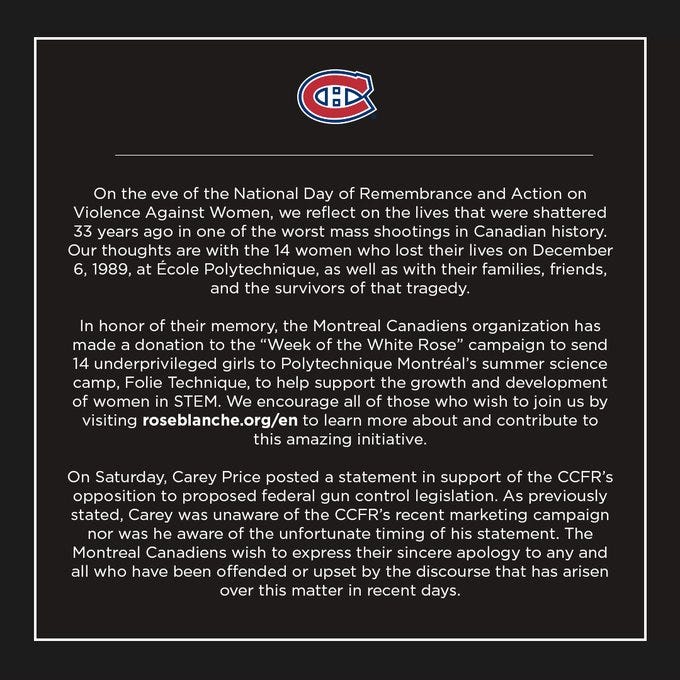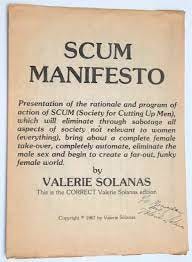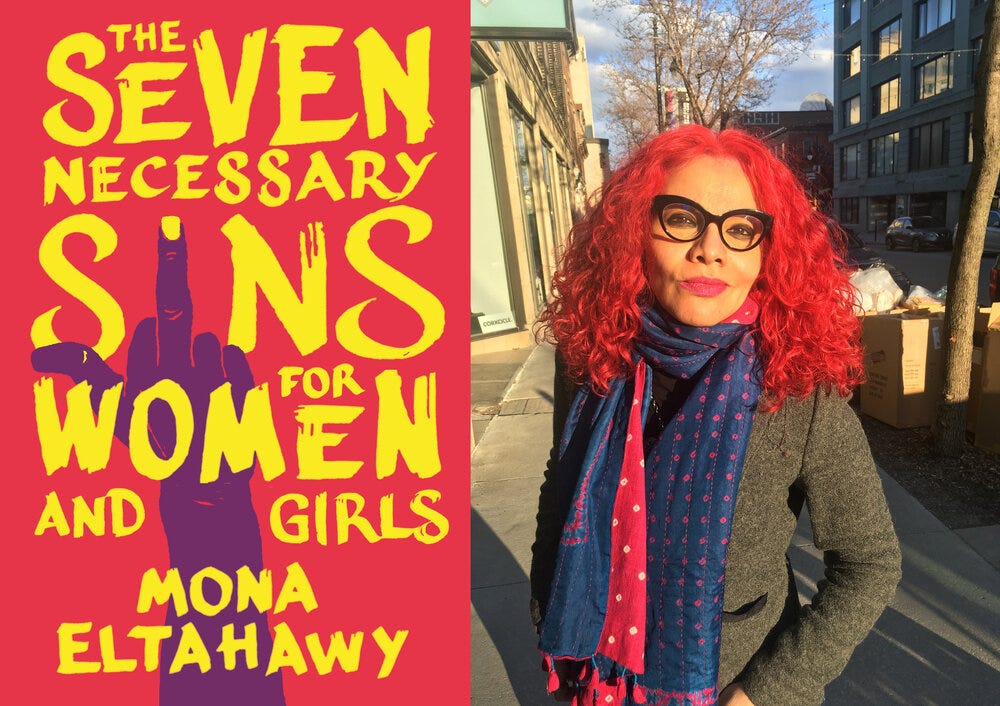If Expressions of Hatred Are Criminal, Many Feminists Should Be Behind Bars
Why is a lone anti-feminist blogger the only one facing jail time?
According to the Canadian criminal code, hate speech is the communication of “statements, other than in private conversation, [that] wilfully promote hatred against any identifiable group.” The promotion of hatred is punishable by a prison sentence of up to two years.
Feminists are open and unashamed about their hate speech, instances of which would fill volumes and which regularly appear in mainstream print and online publications. Two of the most obvious are British feminist leader Julie Bindel’s “Why I Hate Men,” published in The Guardian (“quality reporting on the events shaping our world”) and Professor of Sociology Suzanna Walter’s “Why Can’t We Hate Men?” in The Washington Post (“Democracy dies in darkness”). Anyone expecting satire or subtlety in these opinion pieces will be sorely disappointed.
Professional feminists like Bindel and Walters are clearly not marginalized crackpots laboring in fuggy basement squalor, but recognized pundits, authors, journalists, and tenured professors, often well-respected and well-remunerated.
But if any man states his disgust at feminist bigotry—or even puts a foot wrong in sincere, non-hateful public statements—he is in big trouble.
The first week of December saw the public humiliation of long-time Canadian hero, the Montreal Canadiens’ goaltender, Carey Price, who was forced to apologize for stating his disagreement with the federal government’s anti-gun Bill C-21, which critics say could make it illegal to own a hunting rifle or shotgun.
Price, a member of the Ulkatcho First Nation, used social media to express his support for the Canadian Coalition for Firearm Rights (CCFR), which opposes the proposed legislation. Posting a picture of himself holding what I assume to be a hunting rifle, he expressed his love for his family, community, and country, saying he was “not a criminal or a threat to society.”
The problem was that Price made his post three days before December 6, the anniversary of the 1989 Montreal Massacre, when fourteen women were killed at L’Ecole Polytechnique in Montreal. Price had not realized that a sacrosanct bubble envelops December 6, during which time opinions deemed disrespectful are forbidden.
Feminist lobbyists immediately criticized Price for bad-timing and for supporting the firearms group, claiming that the group had shown disrespect to Montreal Massacre victims by using POLY as a merchandise discount code (the Canadian Coalition for Firearm Rights responded that it had been referring not to L’Ecole Polytechnique but to the anti-gun group PolySeSouvient, which had publicly attacked the CCFR). Regardless, it was clear that Price, making his pro-gun and pro-community post on Saturday, December 3, was not referring in any manner, disrespectful or not, to the women who died at the school thirty-three years ago.
The kneejerk groveling that followed—not so much by Price but by his hockey team leadership—was painful to witness.
More alarming was the news, published in the following week, that Claude Rochefort, a 73-year-old anti-feminist blogger, faces a potential year-long jail term for making bad-taste comments about the Montreal Massacre and glorifying Marc Lépine, the shooter.
The only passage quoted from his blog (the one that got him arrested and charged back in 2019), was the following:
To all a happy December 6. The International Marc Lépine Day, December 6, is almost here again. By now all men should have their homes decorated. The lights should be up. The cards sent out, the carbines polished. A day of feasting, drinking, and celebrating.
That’s it.
The statement reads like what I suspect it was (and what Rochefort claimed), an expression of disgust with a day on which feminist ideologues condemn all men and blame them for failing to stop violence against women. I have documented the plethora of their absurd accusations, which occur year after year with undiminished fervor. This is the way it’s done in Canada: harangue a man for thirty years about his collective guilt, and then when he verbally lashes out, prosecute him for it.
Rochefort’s post was crass and ugly, to be sure, but it pales in comparison with the overt calls for male extermination that are regular feminist fare, which are not only serenely tolerated in North American society—with no police called, no charges laid—but defended as necessary and brave.
In 1967, American feminist author Valerie Solanas founded the Society for Cutting Up Men and published The SCUM Manifesto, which advocated that, for their own good, men should be exterminated. Solanas confirmed on numerous occasions that the book was not satire. It has been reprinted in various feminist anthologies, taught in women’s studies courses, and celebrated by critics such as Professor of Comparative Literature Avital Ronell in her admiring introduction to the book’s re-issue.
For Solanas, men were literally on a par with dogs: “Just as humans have a prior right to existence over dogs by virtue of being more highly evolved and having a superior consciousness, so women have a prior right to existence over men. The elimination of any male is, therefore, a righteous and good act, an act highly beneficial to women as well as an act of mercy” (p. 67).
In the year following the manifesto’s publication, leaders at the National Organization for Women, America’s premier feminist group, rallied around Solanas when she shot with a handgun, and almost killed, pop culture artist Andy Warhol, who never fully recovered. She also shot art critic Mario Amaya. Ti-Grace Atkinson, the president of NOW’s New York chapter, declared Solanas the “first outstanding champion of women’s rights” (qtd in Ronell, p. 10) for the attempted murders.
Lest it be assumed that Solanas and her admirers were a phenomenon of the 1960s, it is worth stressing that many sober feminist leaders, sitting in the comfort of their male-built offices and seminar rooms, have praised Solanas and have themselves advocated the elimination of men—or at least the significant reduction of their numbers—as part of the quest for a better world.
Perhaps the most well-known of these is Sally Miller Gearhart, women’s studies professor and lesbian advocate of women-only communities, who wrote an essay called “The Future—If There Is One—Is Female,” published in 1983 in an anthology unironically titled Reweaving the Web of Life: Feminism and Nonviolence. In this essay, the professor proposed that new reproductive technologies would allow women to reduce the proportion of men “to approximately ten percent of the human race.” Such a reduction—performed nonviolently, Gearhart and her many defenders have made clear—would place the future securely in female hands, and Gearhart promoted all the familiar claims about women’s benign traits. “Historically, [women] have exhibited a more group-oriented and less violent attitude toward human beings and the world in which we live than men have done.” Thus, men should be “peacefully” expunged from the planet.
Asked about this idea in interview, Philosophy Professor Mary Daly approved it, saying, “I think it’s not a bad idea at all. If life is to survive on this planet, there must be a decontamination of the Earth. I think this will be accompanied by an evolutionary process that will result in a drastic reduction of the population of males.”
In 2019, Egyptian-American feminist author Mona Eltahawy published The Seven Necessary Sins for Women and Girls to recommend violence against men, confessing on the very first page that she “wrote this book with enough rage to fuel a rocket,” “still high” from having beaten a man, she claimed, who allegedly sexually assaulted her (1). Her sixth chapter, “Violence,” exhorts women to “push beyond self-defense as the only acceptable way for women to respond to patriarchal violence” (143) and enthusiastically cites Professor of Law Mary Anne Franks, who has vowed that “If men will not refrain from the use of unjust violence against women, and the State refuses to restrain them, then women themselves must be equipped to prevent and preempt this violence” (p. 144).
Eltahawy’s book has glowing commendations on the inside and back covers and has been the subject of many respectful interviews and panel discussions, including by Canada’s state broadcaster. Gloria Steinem enthused that “Reading it will free you, and acting on it will free us all.”
To be clear, I support the right of feminist ideologues to express these abhorrent views (though I am not clear how Eltahawy’s recommendation of violence is not incitement). I see no clear connection between acts of violence and the rancid statements of a Rochefort or Bindel or Daly; if anything, news of Rochefort’s punishment is more likely to incite rage than his disgusted, and disgusting, comments. The entire project of policing (some) hate is absurd.
But let’s be honest about the hypocrisy of the one-way condemnation. It is sickening to read that authorities, not satisfied with Rochefort’s guilty verdict, are disturbed by his failure to show remorse, and it’s a bit much to have Professor Melissa Blais, a feminist named in one of Rochefort’s posts, declaring herself “uncomfortable being in the same room as him.”
I know that many men have been uncomfortable in rooms with feminist women: having to take courses from state-sanctioned ideologues, having to work under them, and having to accept rulings by them in child support or sexual harassment cases. Such men have had to know that these hate-mongers think of men as disposable beings, better off gone. They’ve had to know that, given the chance, such women will vote for the judicial stealing of men’s children, men’s imprisonment for all manner of alleged crimes, and the severe curtailment of men’s freedoms and employment opportunities. Many men, falsely accused, have had to experience such horrors.
And before anyone begins the now-standard, “But it’s men who actually commit the violence …,” do not bother. Men are significant victims of violence in Canada, both by intimate (female) partners and generally, and their victimization provokes almost no empathy or even recognition. If there is a connection between hate speech and hatred of an identifiable group, who can say that fifty years of celebrated feminist hate speech has not contributed both to violence against men and to mass societal indifference?
The move to criminalize anti-feminist expression is simply one more step on the road to feminist hegemony. Feminists used to say, piously, that one could not dismantle the master’s house with the master’s tools. They ended up building a nation-wide prison complex and crying in public about the need to put more and more men in it.








the "gynocracy"; the matriarchal hegemonic goal of hateful feminists
In Australia, Men are significant victims of violence, both by intimate (female) partners and generally, and their victimization and public vilification provokes almost no empathy or even recognition, if anything, it fans the feminist juggernaut to even greater outrageous power grabs and entitlement.
The level of hate speech by feminists in Australia is rising and government endorse. Extreme abhorrent claims like “kill all men” are now loudly lauded by their feminist sistas and enablers.
Wow, Janice is firing on all cylinders in this one! Bravo for calling out the real haters in our society.